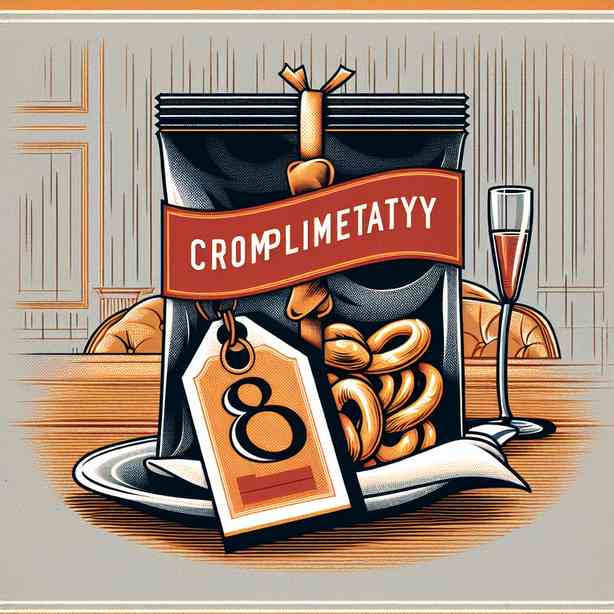
In the vibrant and ever-evolving world of dining, particularly in restaurants, cafes, and bars, there exists a curious phenomenon that has captured the attention of many: the seemingly innocuous “complimentary” snack that comes with an unexpected price tag. Often disguised under the guise of thoughtful hospitality, these snacks have sparked discussions among patrons, leading them to question the true meaning of “complimentary.” In this piece, we will delve into the layers of this intriguing concept, exploring its origins, implications, and the impact it has on the dining experience.
At first glance, one might think of a complimentary snack as a simple gesture – something to nibble on while waiting for a meal or to accompany a drink. Many patrons enter a restaurant expecting to be greeted with a small offering, be it bread, crackers, or perhaps a delightful selection of nuts. These items are generally perceived as a token of appreciation from the establishment, a way to create a welcoming atmosphere and enhance the dining experience. However, when these snacks come with an $8 price tag, the perception shifts dramatically.
To fully comprehend the implications of this practice, it’s important to explore the origins of complementary snacks in the hospitality industry. Historically, snacks offered to customers have served various purposes. They not only kept patrons occupied while their meals were being prepared, but also encouraged them to order more drinks. This strategic approach to customer engagement has evolved over recent years, leading to increasingly creative presentations and upscale ingredients, which may contribute to their elevated cost.
As restaurants strive to differentiate themselves in a highly competitive market, they often invest in unique or artisanal snacks that reflect their brand philosophy and culinary perspective. Consider, for instance, a trendy gastropub that serves hand-crafted potato chips seasoned with gourmet spices. While the intention behind offering such snacks may be rooted in enhancing the customer experience, the fact remains that the addition of a price can leave patrons feeling confused or even exploited.
Furthermore, the psychological factor plays a significant role in this scenario. When diners encounter a “complimentary” item priced at $8, it challenges the notion of gratuity and hospitality. Instead of amplifying the experience or creating a sense of being cared for, it may evoke feelings of skepticism. Guests might wonder if they are truly benefiting from something complimentary or if they are unwittingly participating in another upselling tactic.
Beyond the immediate dining experience, the practice of charging for items once considered complimentary raises broader questions about the modern dining industry. Many diners today are more informed and aware of pricing structures, leading to an increasing demand for transparency. The rising trend of chefs and restaurateurs emphasizing honesty in their menus indicates that consumers value an open dialogue about pricing. When establishments price themselves accordingly, patrons may feel more satisfied and less manipulated.
Social media has played a pivotal role in how customers engage with dining experiences. With platforms like Instagram or TikTok, diners often share their latest food adventures, including any surprises they encounter, such as an $8 “complimentary” snack. These platforms allow patrons to voice their opinions, leading to a ripple effect of reviews and discussions that can significantly influence other diners’ perceptions and choices. This increased visibility has made it imperative for restaurants to be mindful of their practices and the messages they convey through their offerings.
Interestingly, some establishments have acknowledged the shift in consumer attitudes and decided to adopt a transparent approach. By clearly stating the purpose and price of their snacks — perhaps positioning them as a gourmet experience — they can mitigate skepticism and enhance customer satisfaction. This method reflects an understanding that a well-informed diner is likely to appreciate quality over merely seeking a free experience.
As we consider the future of dining, it seems that the conversation surrounding these “complimentary” snacks will continue to evolve. With changing consumer expectations, restaurants that embrace authenticity and transparency will likely find favorable reception among diners. Creating a memorable experience while honoring the evolving perspectives of patrons could lead to a harmonious relationship between establishments and their guests.
In conclusion, the strange phenomenon of the “complimentary” snack that costs $8 is more than just a quirky aspect of dining; it’s an emblem of the ongoing transformation within the culinary landscape. As consumers become increasingly discerning, restaurants will need to innovate not just in terms of cuisine but also in their approach to guest experience. Understanding the balance between hospitality and pricing, particularly when it comes to their snack offerings, will play a crucial role in fostering trust and loyalty among patrons. By embracing a transparent, honest, and engaging dining experience, establishments can navigate these complexities and continue to thrive in an ever-competitive industry.


